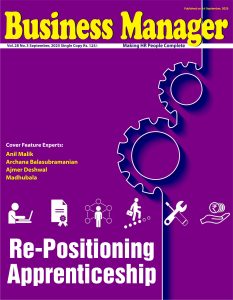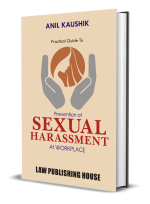Employee experience has always been a fundamental driver of retention and engagement. However, as workplace structures evolve, employees expect benefits beyond the traditional. Gen Z and millennials want relevance, choice, and purpose in every benefit. They want benefits that address their unique needs and aspirations. Recent data highlights this shift, where 71% of employees consider flexible work arrangements essential, while 80% of employees emphasized the importance of career development programs.
Businesses are still catching up, which has created a significant gap between expectations and reality. It is important to note that only 29% of the employees feel their current employer adapts to employees’ needs or requirements very well, while 49% believe adaptation is moderate. Additionally, while 61% of the employees believe their current benefits meet expectations, only 12% feel these benefits exceed expectations.
This gap between expectation and experience is no longer a minor miss; it’s a loyalty risk. Employees today want benefits that reflect who they are and where they’re headed. The way forward? Design programs that are flexible, intuitive, and deeply personal, just like great customer experiences.
Why experience matters in employee benefits
Benefits, when viewed through the lens of experience, are far more than a set of policies.The way they are designed and delivered shapes how employees feel about belonging, well-being, and growth, starting from day one.
Also read – Exide Industries elevates Deepa Singh to the position of VP- HR and Head of Administration
Organizations that prioritize employee experience in benefits see measurable business outcomes. Retention goes up, attrition drops, and people stay because they feel supported, not just compensated. When benefits align with what employees truly value, engagement and productivity follow.
Several companies have successfully integrated employee experience into their benefits strategy.
Microsoft reimagined work by putting well-being and flexibility at the core, using hybrid models and tools like Teams to keep global teams connected, collaborative, and inclusive. Salesforce puts experience at the center with personalized workflows and real-time feedback, giving employees more ownership, connection, and momentum at work. Google takes it a step further by offering a comprehensive, life-stage-focused benefits program. From mental health support and financial coaching to hybrid work options and family care, the company’s approach is designed to meet diverse employee needs in a practical and inclusive way.
Aligning benefits with evolving employee expectations
Meeting today’s employee expectations requires a shift from static benefits models to more flexible, data-informed approaches.Three areas are emerging as key to making this shift effective:
Data-driven decision-making: AI and analytics enable companies to design benefits that reflect actual employee needs. By analyzing usage patterns and preferences, organizations can personalize offerings, ensuring relevance and impact. This also helps identify under-utilized benefits, allowing for better resource allocation.
Flexible benefits models: Employers are increasingly shifting to modular plans that allow employees to choose benefits that matter most to them. For instance, some organizations now offer “Benefit Wallets,” where employees receive points to allocate toward wellness, learning, or lifestyle benefits based on their priorities.
Continuous feedback: Implementing regular pulse surveys and employee forums helps gather real-time feedback, enabling organizations to refine their offerings. Companies like Netflix have embraced this approach, continuously adjusting their benefits strategy based on direct employee input, ensuring relevance and long-term satisfaction.
What makes a benefits program loyalty-led
A thoughtful benefits program goes beyond standard offerings; it builds trust, engagement, and long-term commitment. With a multigenerational workforce, benefits need to reflect different life stages, financial wellness tools for younger employees, and stronger retirement planning for those later in their careers.For example, Gen Z employees may prioritize financial wellness tools, while older employees value robust retirement plans. Personalized offerings ensure that benefits remain meaningful and impactful across demographics.
Ease of access also matters. Mobile-first platforms let employees check and manage their benefits anytime, cutting out admin-heavy steps.When benefits are easily accessible, they become an integral part of the employee experience rather than an afterthought.
Clarity in communication enhances trust. Employees should have a clear understanding of their benefits eligibility, claim processes, and available options. Organizations that prioritize transparency reduce confusion, increase engagement, and ensure employees fully utilize their benefits.
The way forward
The future of employee experience in benefits will be driven by hyper-personalization and adaptability. With advancements in AI and machine learning, organizations will use predictive analytics to tailor benefits to employees’ life stages, ensuring that offerings evolve in sync with their needs. For example, benefits may shift from financial planning support for younger employees to more comprehensive retirement packages as they approach the later stages of their careers. As hybrid and remote work continue to be prevalent, benefits will also expand to include wellness stipends, home office allowances, and global insurance policies, catering to the diverse work environments in which employees now operate.
In addition to flexibility, the focus on holistic well-being will redefine benefits strategies. Companies will integrate mental health support, diversity, equity, inclusion, and belonging (DEIB) initiatives, and sustainability-focused benefits into their offerings. These will reflect the broader societal shifts towards prioritizing mental wellness, inclusivity, and environmental responsibility. The combination of personalized, adaptable, and well-rounded benefits will shape the future of employee experience, creating a more engaged and satisfied workforce.
Stay connected with us on social media platforms for instant updates click here to join our LinkedIn, Twitter & Facebook







